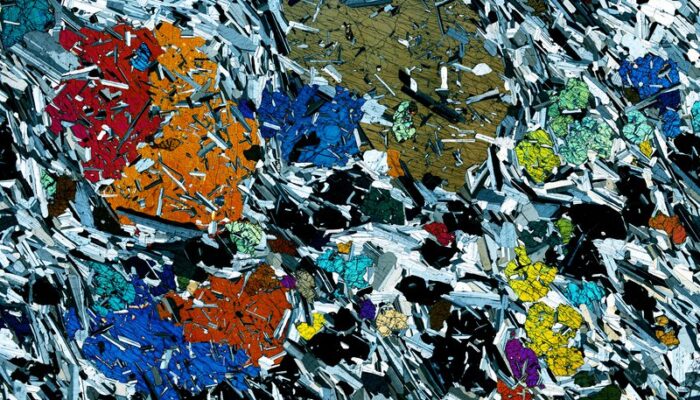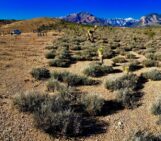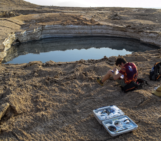
This picture shows a 30 micrometer thick rock section of a gabbro from the Rum Layered Intrusion (Scotland). Large clinopyroxene crystals are enclosed in a foliated fine grained groundmass of plagioclase and olivine. The clinopyroxene core crystallized at an early stage, at 1160°C. They were partly molten at 1200°C during successive hot magma injections and subsequently recrystallized, enclosing heat resistant groundmass crystals. This process is opposite to the classical view of cooling and crystallizing magmas. As a result, secondary minerals such as spinel were saturated and subsequently absorbed PGE ore.
It has taken millions of years to form a rigid crust at the Earth’s surface, progressively built up by cooling lavas. Just imagine how apocalyptic it must have been! Today, we still find magma in the partially molten inner parts of the Earth, which erupts periodically and give a brief idea of such past time. 60 million years ago, huge eruptions were taking place in Scotland. One of the volcanoes looked like a huge cauldron, 4km in diameter and 1km deep. It was heated to extreme conditions, by hundreds of lava injections directly coming from deep within the Earth at temperatures of 1250°C. Early cooled rocks were re-melted, caught in a fight between crystallization and melting. The crystals were deformed and their composition was changed during heating, cooling and compaction.
The Scottish wind and rain have finally frozen the cauldron and started to erode it. Valleys now offer access to its deep parts, where we can read a fantastic tale, written with crystal letters. And who knows… a similar story may start tomorrow in Iceland…!
This is a stitched image of a 4x2cm sample, acquired with a Nikon Eclipse LV100-UDM-POL microscope, under cross polarized light.
Description by Julien Leuthold, as it first appeared on imaggeo.egu.eu
Our annual Imaggeo Photo Competition is open! From 15 January until 15 February, every participant pre-registered for the General Assembly can submit up three original photos and one moving image related to the Earth, planetary, and space sciences in competition for free registration to next year’s General Assembly! These can include fantastic field photos, a stunning shot of your favourite thin section, what you’ve captured out on holiday or under the electron microscope – if it’s geoscientific, it fits the bill. Find out more about how to take part at http://imaggeo.egu.eu/photo-contest/information/.
Imaggeo is the EGU’s online open access geosciences image repository. All geoscientists (and others) can submit their photographs and videos to this repository and, since it is open access, these images can be used for free by scientists for their presentations or publications, by educators and the general public, and some images can even be used freely for commercial purposes. Photographers also retain full rights of use, as Imaggeo images are licensed and distributed by the EGU under a Creative Commons licence. Submit your photos at http://imaggeo.egu.eu/upload/.




